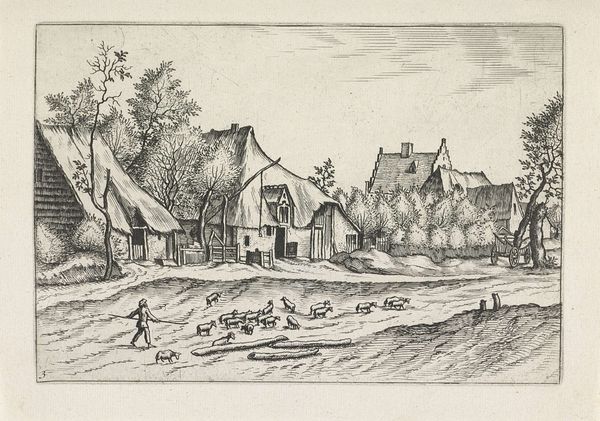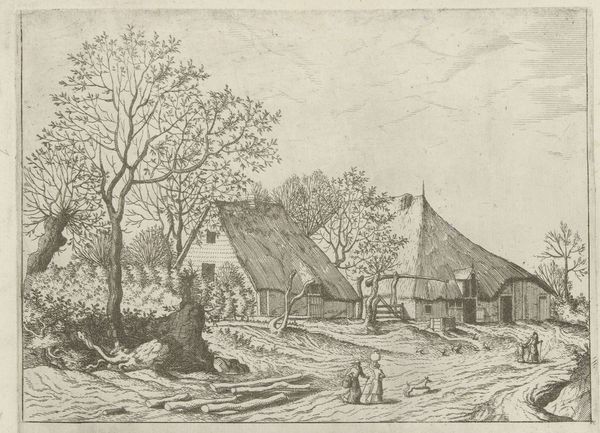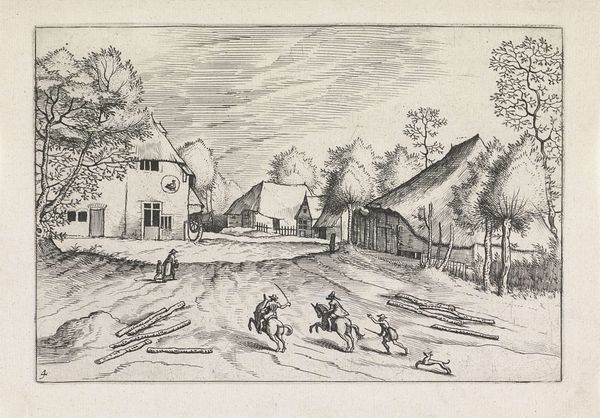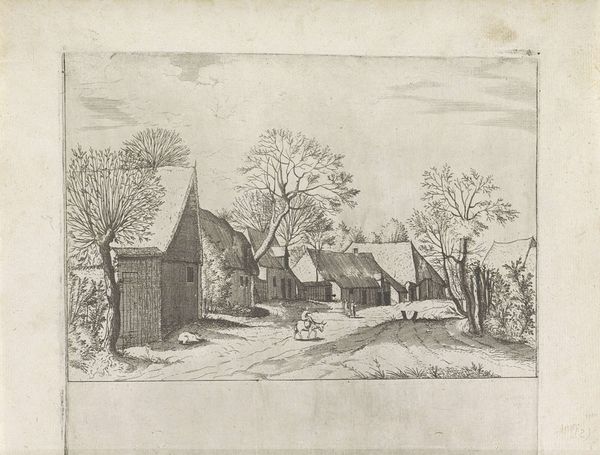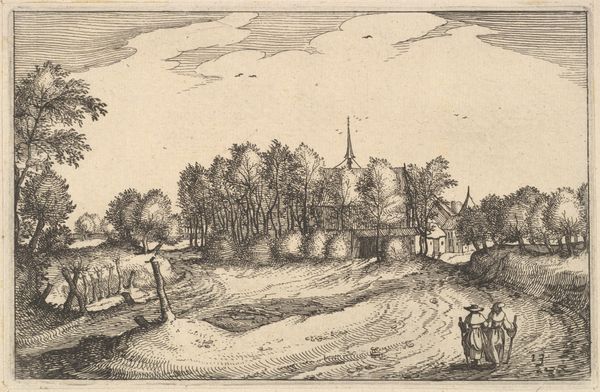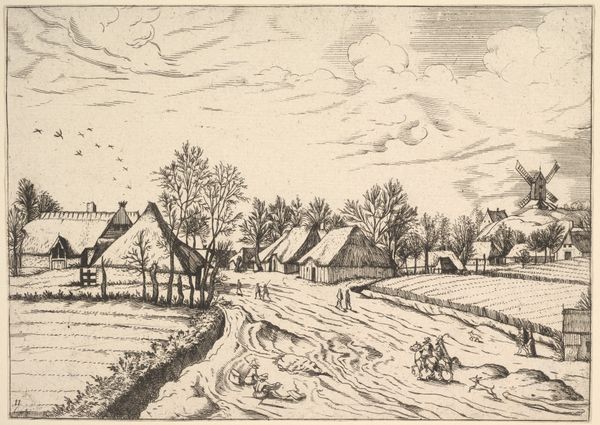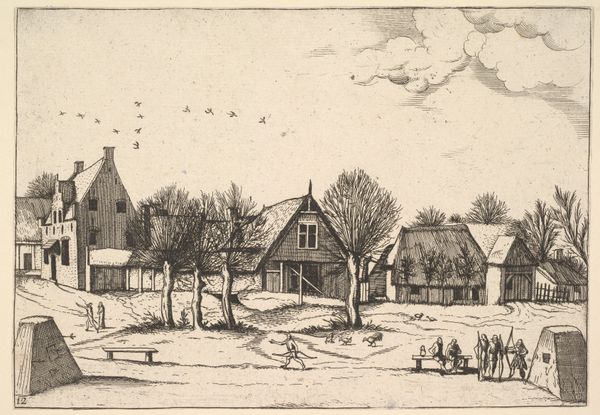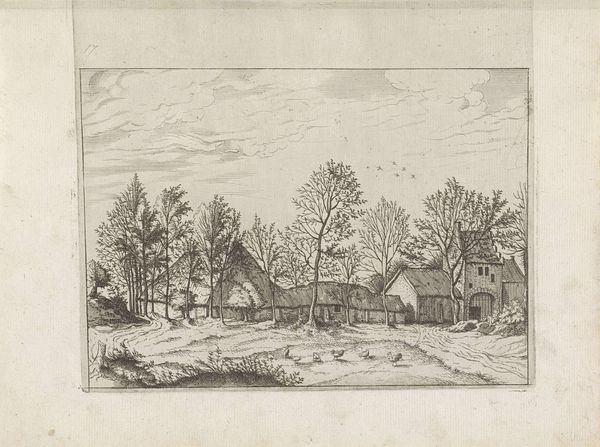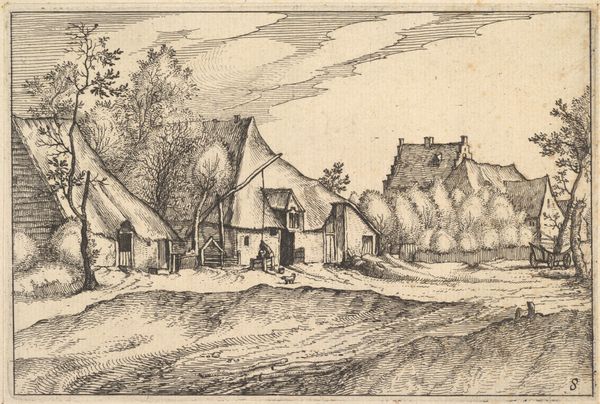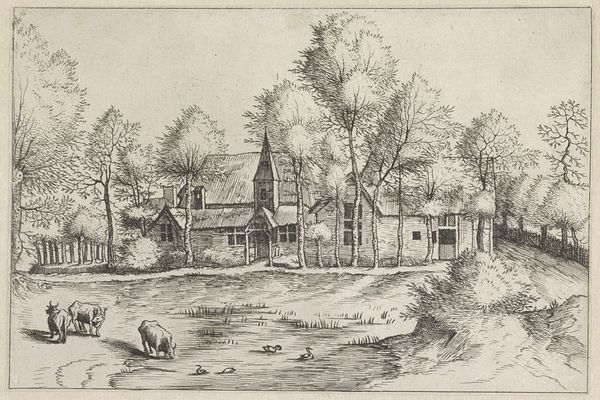
drawing, print, ink, engraving
#
drawing
#
medieval
# print
#
landscape
#
ink
#
cityscape
#
northern-renaissance
#
engraving
Dimensions: height 134 mm, width 202 mm
Copyright: Rijks Museum: Open Domain
Editor: This drawing, titled "Gezicht op een dorp met een kerktoren," or "View of a Village with a Church Tower," created between 1559 and 1561 by Johannes or Lucas van Doetechum, captures a seemingly simple scene in ink. What I find fascinating is the way this humble, rural setting gains significance through the social implications of its architectural focal point—the church. What's your take? Curator: Well, looking at this engraving, it's important to understand the role of landscape imagery during the Northern Renaissance. These weren't just picturesque scenes; they were often tied to burgeoning national identities and burgeoning religious ideologies. Editor: That makes sense. How so? Curator: Think about it: the church tower isn’t just a landmark. It visually anchors the community, suggesting a shared belief system and, potentially, the controlling influence of religious institutions on daily life. Do you notice anything about how the houses compare to the church? Editor: Yes, the church is noticeably taller and seems more fortified. So, this piece isn’t just about showing a village, but possibly about suggesting a particular power dynamic within that community. Curator: Precisely! And these prints were widely distributed, making them important tools in shaping perceptions of the social landscape. This image, while seemingly serene, invites questions about power, faith, and communal life during a period of great religious and social change. Editor: I never thought of landscapes holding such significance. Now I see it's about more than just pretty scenery. Curator: Exactly. And that realization is key to appreciating its enduring impact on artistic expression and cultural memory.
Comments
No comments
Be the first to comment and join the conversation on the ultimate creative platform.
